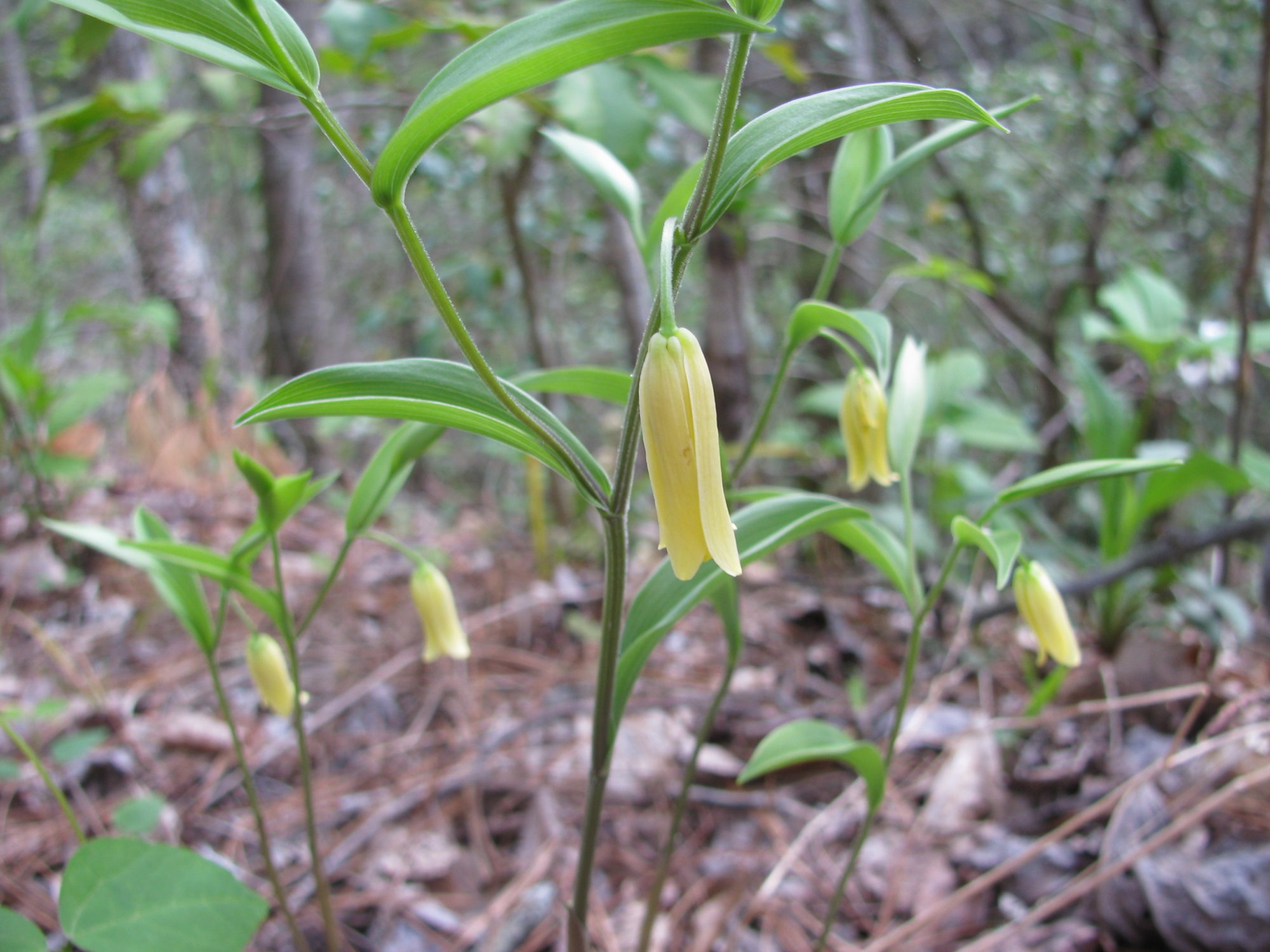I am fond of bellworts (genus Uvularia). Bellworts are in the Colchicaceae (autumn corcus family) which includes many common garden bulbs. I was lucky to see the four New York species of Uvularia over the past few years and this post will highlight their identifying features.
There are three common bellworts in New York: Uvularia grandiflora, Uvularia perfoliata and Uvularia sessilifolia. The fourth species of bellwort, the mountain bellwort (Uvularia puberula), was only documented on Long Island in 1925. All four of these bellworts live in forests and produce dropping yellow flowers in the spring (New York Flora Atlas: Uvularia). They are identified by their floral and leaf characteristics.
Large-flowered bellwort, or Uvularia grandiflora, has large flowers with smooth, wavy petals (Go Botany: Uvularia grandiflora). The specific epithet, or species name, describes the ‘grand’ size of the flowers. The leaves are perfoliate, which means it looks like the stem has poked through the leaves. Large-flowered bellwort lives in rich forests, and its roots have been used to treat sore muscles and tendons (New York Flora Atlas: Uvularia grandiflora, Go Botany: Uvularia grandiflora).
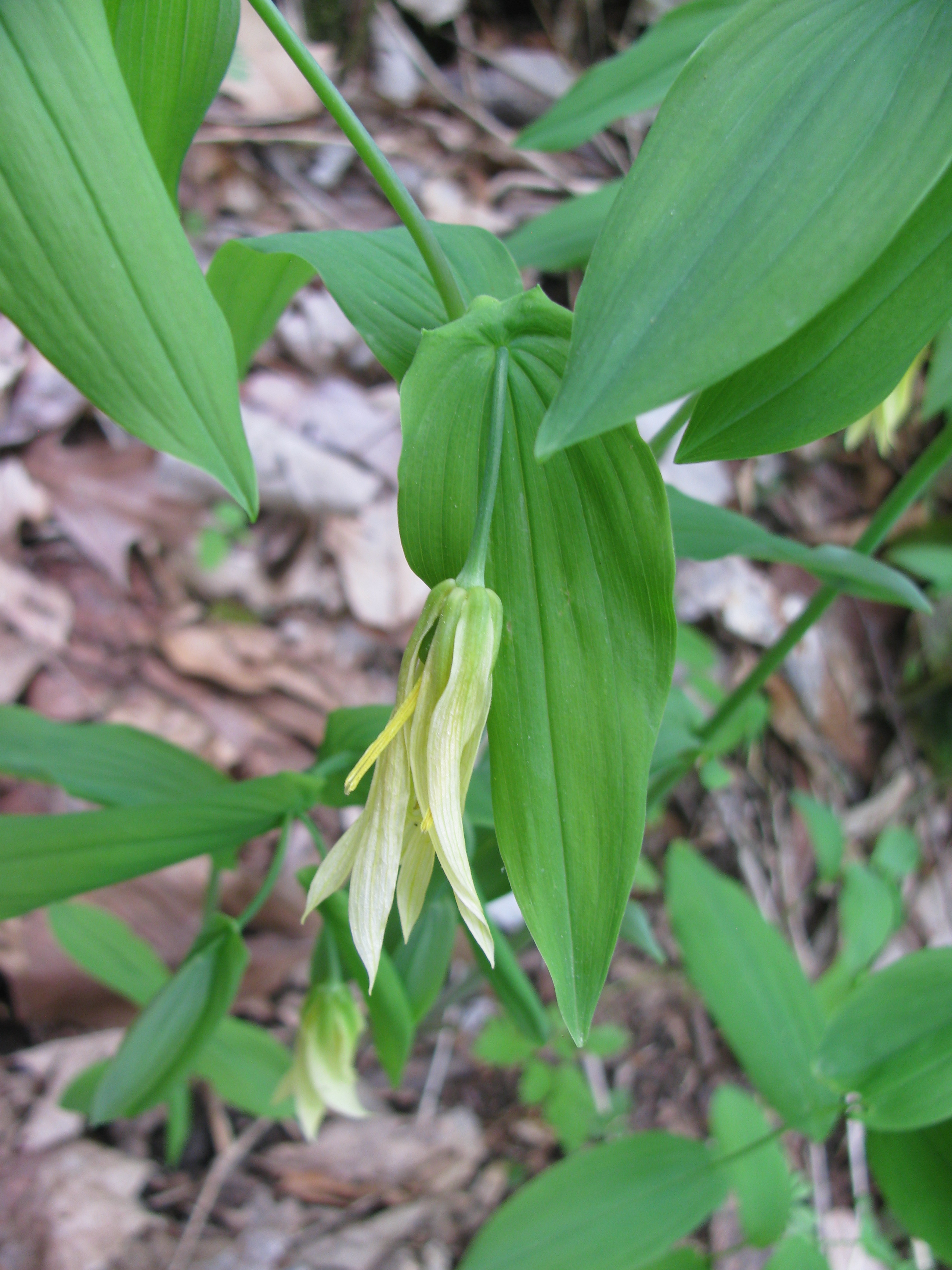
You can clearly see the perfoliate leaves on this large-flowered bellwort (Uvularia grandiflora, Colchicaceae)

Another view of the perfoliate leaves and the loose, wavy petals of the large-flowered bellwort (Uvularia grandiflora, Colchicaceae)

Large flowers with smooth, wavy petals (Uvularia grandiflora, Colchicaceae)
Perfoliate bellwort, or Uvularia perfoliata, has petals that are compact, straight and bumpy. The specific epithet perfoliate describes how the stem punctures the leaves. Both the large-flowered bellwort and the perfoliate bellwort have perfoliate leaves, but their petals are distinctive (Go Botany: Uvularia perfoliata). The perfoliate bellwort lives in drier forests, and the roots have been used as a wash for sore throats and eyes (New York Flora Atlas: Uvularia perfoliata, Go Botany: Uvularia perfoliata).

You can see the perfoliate leaves of this perfoliate bellwort (Uvularia perfoliata, Colchicaceae)
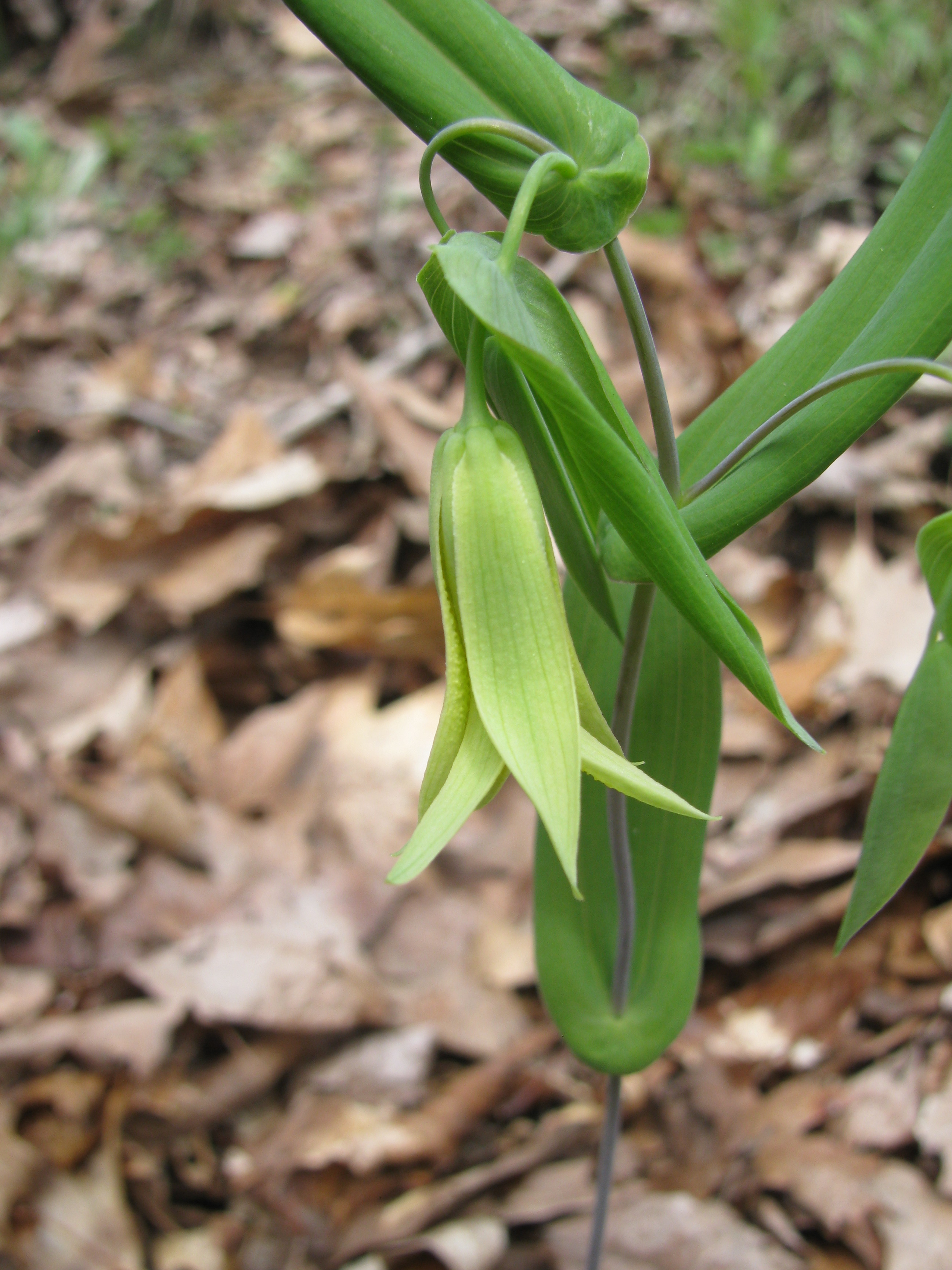
On the side of the left petal, you can see the bumps on the internal face (Uvularia perfoliata, Colchicaceae)

Better view of the bumps on the internal face of the petals (Uvularia perfoliata, Colchicaceae)
Wild-oats, or Uvularia sessilifolia, have small flowers that are pale yellow in color. The leaves are sessile (thus the specific epithet), which mean there is no petiole connecting the leaf to the main stem (Go Botany: Uvularia sessilifolia). The sessile leaves clearly differentiates wild-oats from the large-flowered bellwort and the perfoliate bellwort. This plant lives in cooler areas of forests with acidic soils and the young leaves can be eaten as a cooked green (New York Flora Atlas: Uvularia sessilifolia, Go Botany: Uvularia sessilifolia).

Wild-oats have sessile leaves, or leaves attached directly to the stem (Uvularia sessilifolia, Colchicaceae)
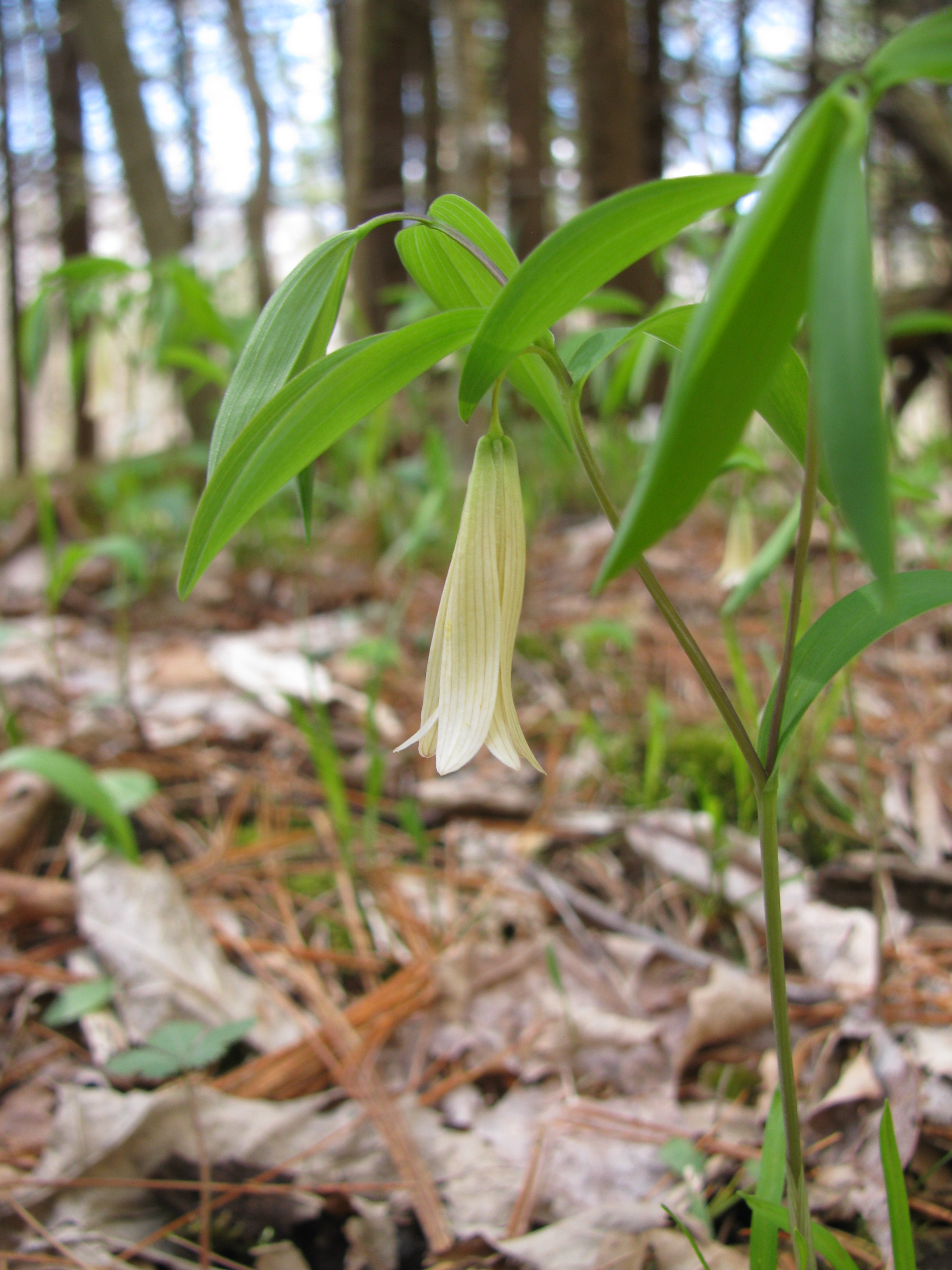
Wild-oats have small flowers with reddish stripes (Uvularia sessilifolia, Colchicaceae)
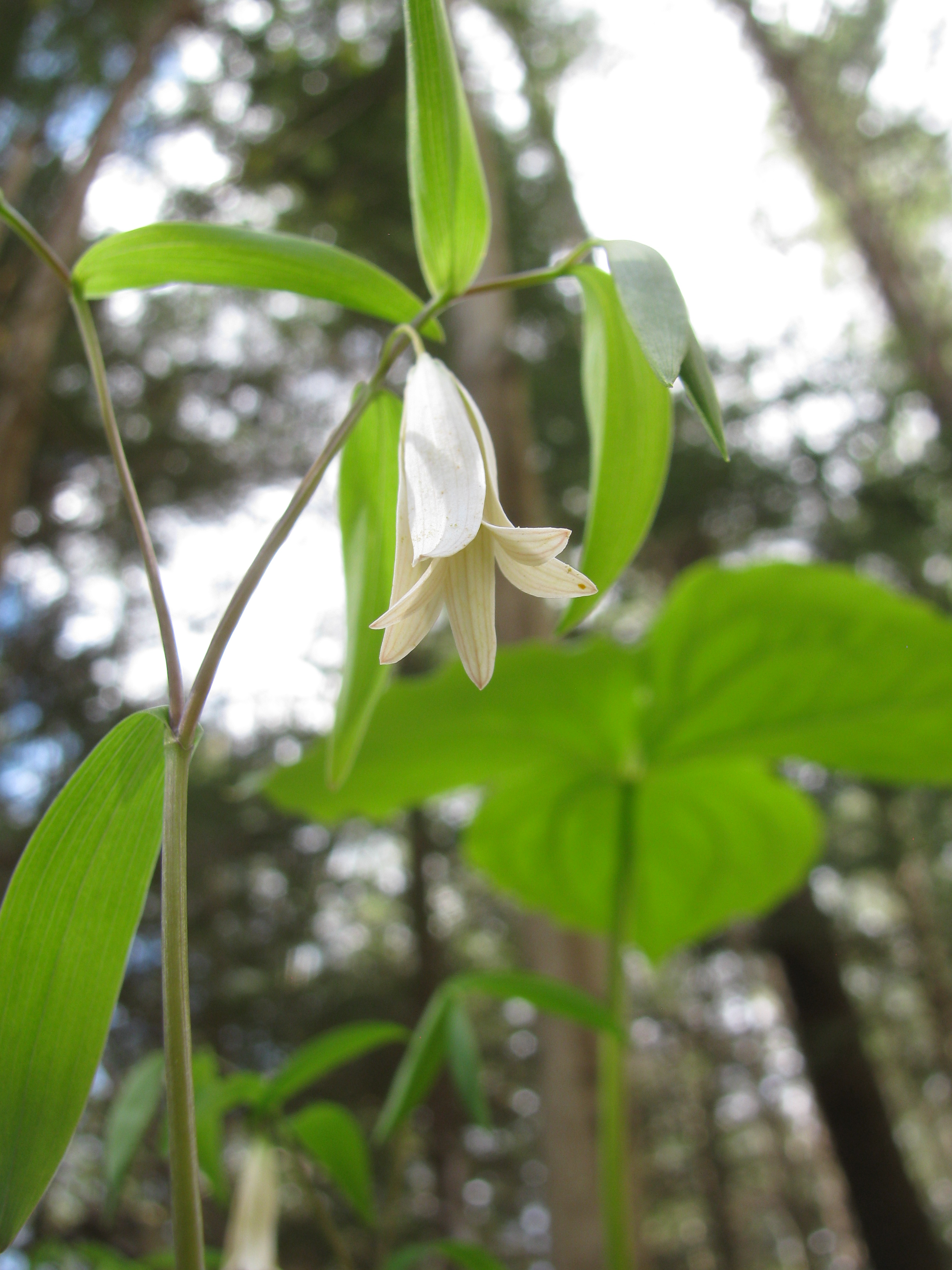
These plants have straight, smooth petals (Uvularia sessilifolia, Colchicaceae)
I was pretty happy to see the three common NY bellworts last year and I didn’t expect to see the mountain bellwort anytime soon. However, my friends and I were down in Tennessee, and I was excited to find some mountain bellworts!
The mountain bellwort (Uvularia puberula) looks similar to wild-oats (Uvularia sessilifolia) as they have both have sessile leaves and smooth petals. However, mountain bellworts are puberulent, which means they have small hairs on the stems and the bottom of the leaves (Flora of North America: Uvularia). This is also the reason for the specific epithet puberula. Mountain bellworts grow in partial shade and can tolerate wet to dry soils (NC Native Plant Society: Uvularia puberula).
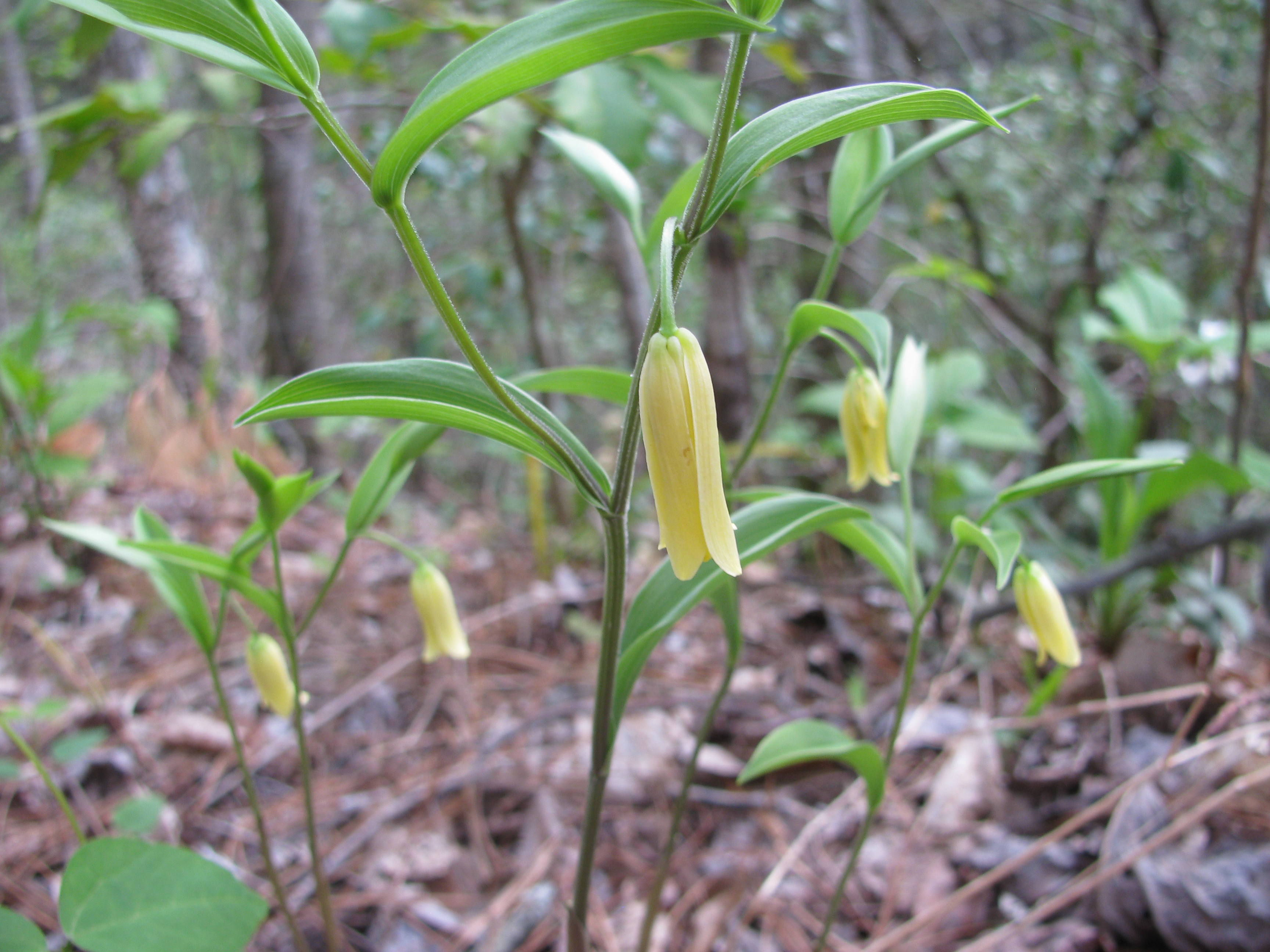
Sessile leaves and small flowers of the mountain bellwort (Uvularia puberula, Colchicaceae)

You can just see the small hairs along the edge of the stem in this photo (Uvularia puberula, Colchicaceae)

Mountain bellworts have smooth and straight petals (Uvularia puberula, Colchicaceae)
